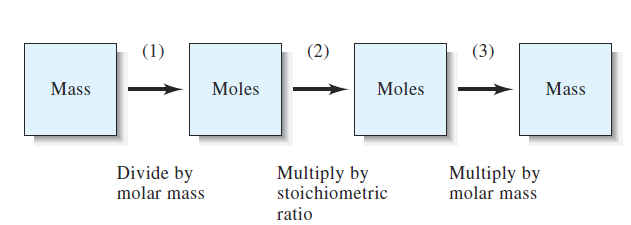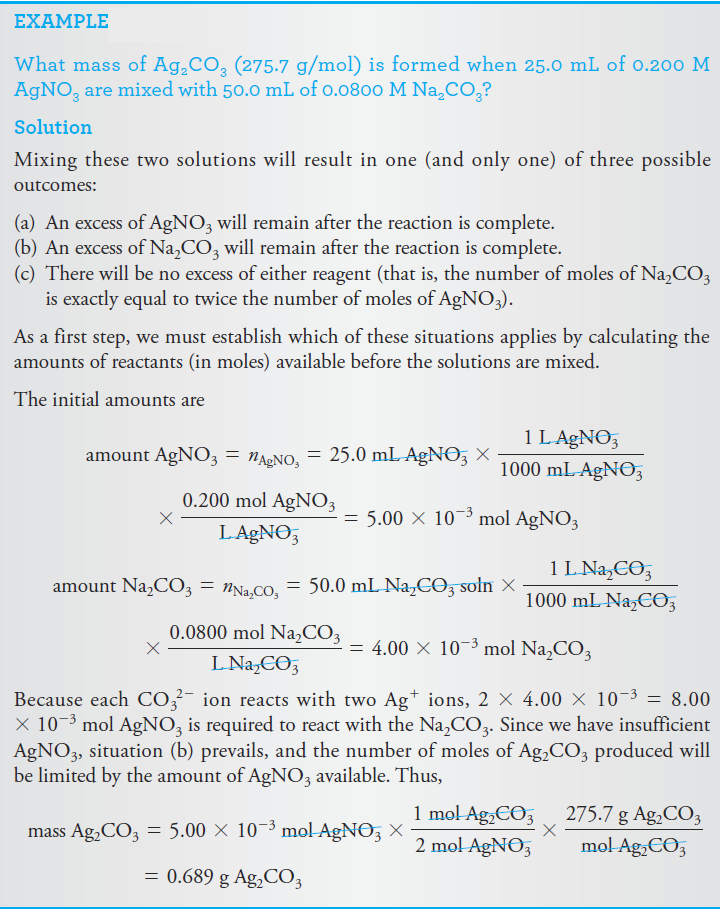


 علم الكيمياء
علم الكيمياء 
 الكيمياء التحليلية
الكيمياء التحليلية 
 الكيمياء الحياتية
الكيمياء الحياتية 
 الكيمياء العضوية
الكيمياء العضوية 
 الكيمياء الفيزيائية
الكيمياء الفيزيائية
 الكيمياء اللاعضوية
الكيمياء اللاعضوية 
 مواضيع اخرى في الكيمياء
مواضيع اخرى في الكيمياء
 الكيمياء الصناعية
الكيمياء الصناعية |
Read More
Date: 19-5-2019
Date: 24-8-2016
Date: 8-8-2016
|
Stoichiometric Calculations
A balanced chemical equation gives the combining ratios, or stoichiometry—in units of moles—of reacting substances and their products. Therefore, the equation

indicates that 2 moles of aqueous sodium iodide combine with 1 mole of aqueous lead nitrate to produce 1 mole of solid lead iodide and 2 moles of aqueous sodium nitrate. Example below demonstrates how the mass in grams of reactants and products in a chemical reaction are related.

Figure 1-1 Flow diagram for making stoichiometric calculations. (1) When the mass of a reactant or product is given, the mass is first converted to the number of moles, using the molar mass. (2) The stoichiometric ratio given by the chemical equation for the reaction is then used to find the number of moles of another reactant that combines with the original substance or the number of moles of product that forms. (3) Finally, the mass of the other reactant or the product is computed from its molar mass.
As shown in Figure 1-1, a calculation of this type is a three-step process of (1) transforming the known mass of a substance in grams to a corresponding number of moles, (2) multiplying the number of moles by a factor that accounts for the stoichiometry, and (3) converting the number of moles back to the metric units called for in the answer.





|
|
|
|
"عادة ليلية" قد تكون المفتاح للوقاية من الخرف
|
|
|
|
|
|
|
ممتص الصدمات: طريقة عمله وأهميته وأبرز علامات تلفه
|
|
|
|
|
|
|
المجمع العلمي للقرآن الكريم يقيم جلسة حوارية لطلبة جامعة الكوفة
|
|
|